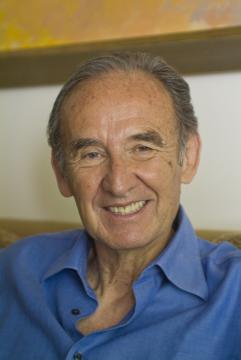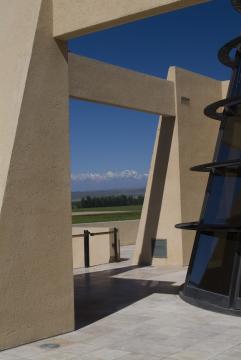Nicolas Catena
POSTED ON 03/11/2008 Nicolas Catena
Nicolas Catena
Nicolas Catena is a fully paid up member of the fraternity of Mathematical Economics professors. So when the good doctor tells you that his company owns 2,500 hectares of vineyards, that rainfall is less than 200 millimetres in Mendoza and that the first vintage of Caro, his joint venture red with Baron Eric de Rothschild, was 72 per cent cabernet, these are figures you can rely on. When he starts talking pesos and politics, your head begins to spin. The soft-spoken professor is so brainy he reminds you of the ticket inspector in Monty Python: ‘I’m a qualified brain surgeon. I only do this job because I like being my own boss’. I suppose running one of Argentina’s most successful wine companies beats inspecting rail tickets.
In 1902 his immigrant grandfather Nicola planted his first vineyard, of malbec, and it was assumed, coming from a good Italian family, that young Nicolas would follow in his footsteps into the vineyards and winery. Which he did. By the 1960s, working for his father Domingo, Argentina was expanding to meet the growing demand for wine, and Nicolas decided to start bottling the company’s own wines instead of selling in bulk. He bought two bottling facilities in 1965, one for table wines and one for so-called vino tinto fino. By the end of the 1970s, the Catena wineries were lording it, producing 240 million bottles at the peak of consumption: 95 litres per person. The turning point came at the start of the 1980s when Nicolas decided to sell all the non-premium wine facilities.
Coincidentally, a stint at the University of California at Berkeley in 1982 as a visiting professor vindicated his decision to go the quality route but opened his eyes to new possibilities. ‘I had a revelation’, he says. ‘Californians were trying to compete with Montrachet and Médoc. For me it was a shock to see the changes in California accompanied by investment and research and I resolved to try to do something similar in Argentina’. This was the beginning of Argentinian aspirations to make great wines that could compete on the world stage. Only one problem: he didn’t think that malbec, which we now know to be Argentina’s usp, was up to it.
 Catena Zapata, Mendoza
Catena Zapata, Mendoza
‘I will admit that I was suspicious of malbec and prejudiced against it’, says Nicolas, whose father and grandfather before him had always assumed that good red wine meant oxidising the hell out of it in large Italian-style old casks. Ignoring malbec, he decided that the Bordeaux and Burgundy styles were The Way Forward and immediately brought overseas winemakers in to make it happen: Jacques Lurton from Bordeaux to make the cabernet and Paul Hobbs, then at Simi in California, the chardonnay. Although getting hold of good vine material was problematic, it all started to go well from 1990 for the chardonnay and 1993 for the cabernet. But something happened.
Before his death, his father, Domingo, as if from a Godfather remake, made him promise to try to make a great malbec. ‘For sentimental reasons (we are after all an Italian family), I said okay let’s give this crazy varietal a go’. Admitting his suspicion of a variety that until then had produced very little out of the ordinary, Nicolas, using his scientifically-trained mind, set about researching clonal selection, drip irrigation, sunlight intensity and high altitude trials to try and bring respectability to this Argentinian ruffian of a grape variety. He took on the Italian winemaker, Attilio Paglia, as a consultant and produced his first great vintage of malbec in 1996, ironically the year of his father’s death. Since that time, Catena and malbec have become synonymous.
Today, when asked which is the variety he’d hang his gaucho hat on, Nicolas finds himself sitting on the fence. ‘There is no clear answer’, he says, backing that with two top reds, Malbec Argentino, a pure malbec and Catena Alta Cabernet Sauvignon, a pure cabernet. ‘The Americans seem to prefer 100 per cent malbec but the Europeans, in particular the British, prefer a cabernet malbec blend, I suspect because of that twist of bitterness that cabernet gives’. You get the feeling that if this complex, multi-faceted character sees himself as something of an Argentinian Robert Mondavi, his head says cabernet, while, harking back to his family roots and Argentina’s own heritage, his heart says malbec. Which is possibly why his top wine, Nicolas Catena Zapata, is a judicious blend of the two.

